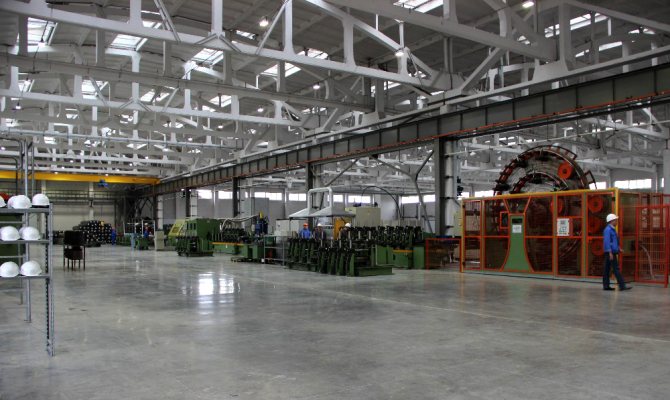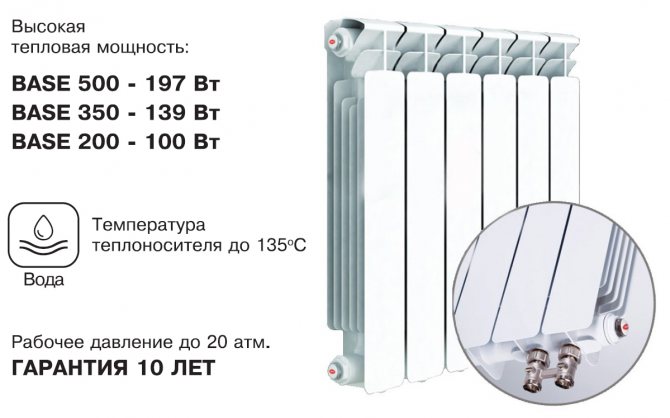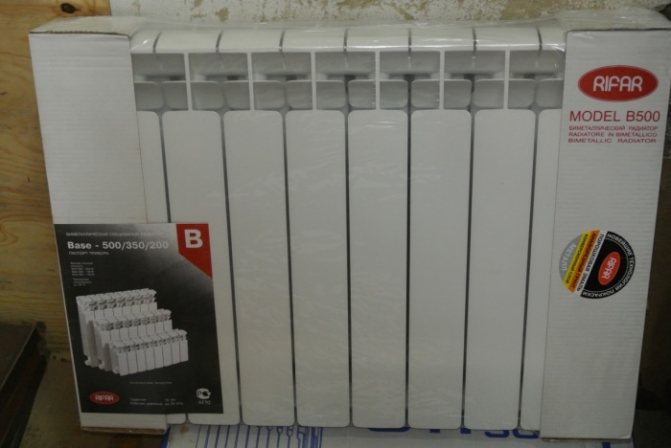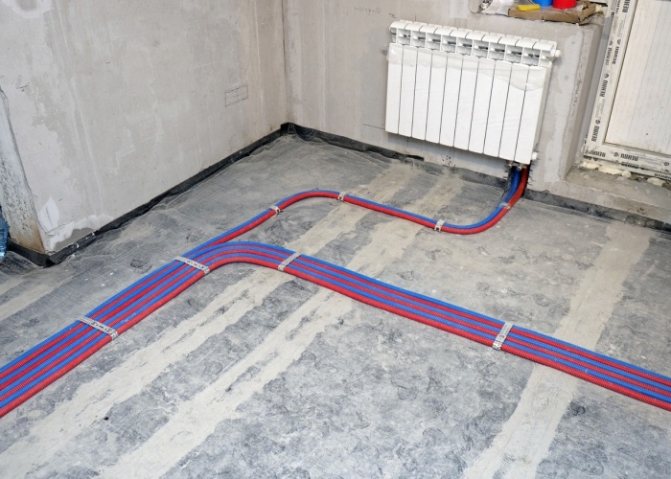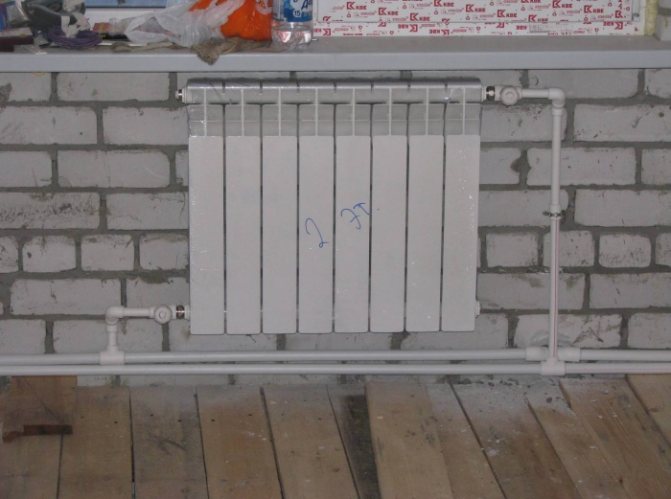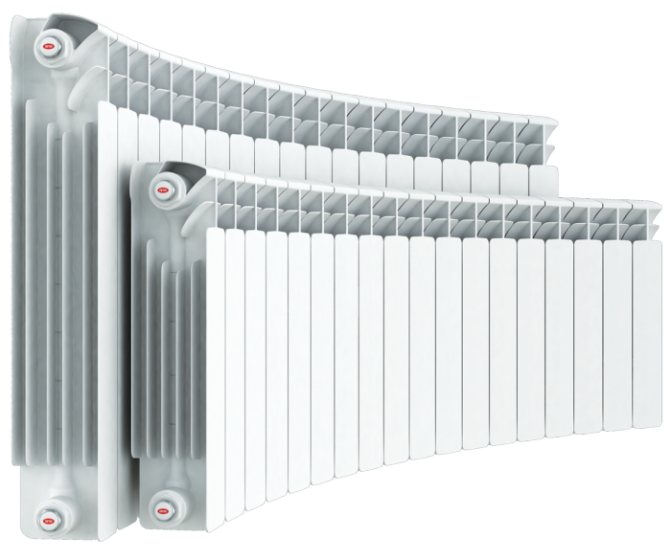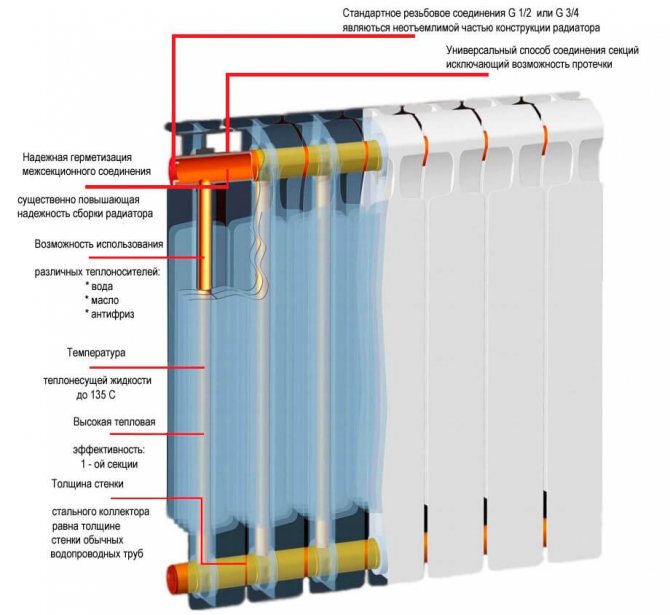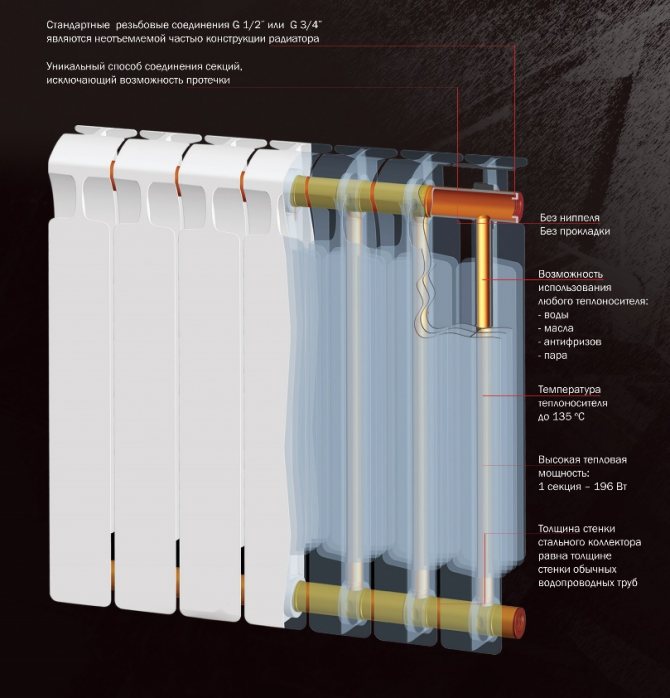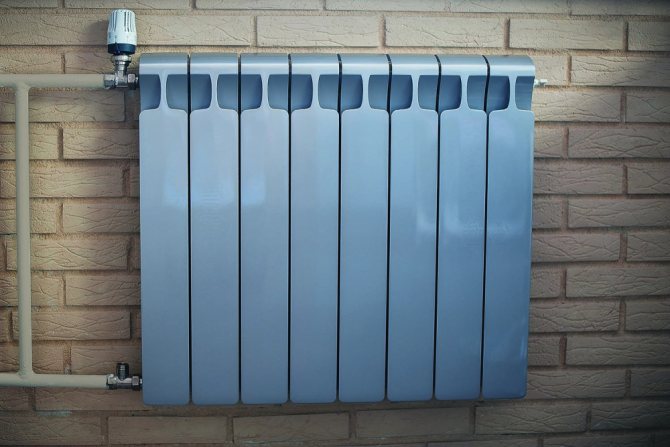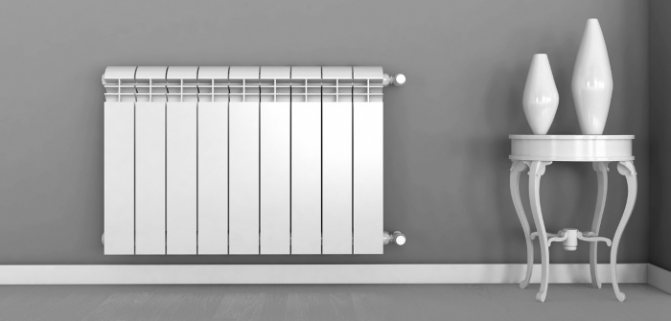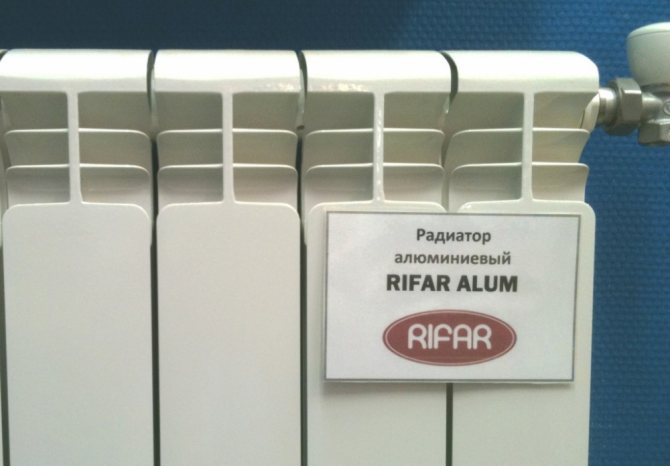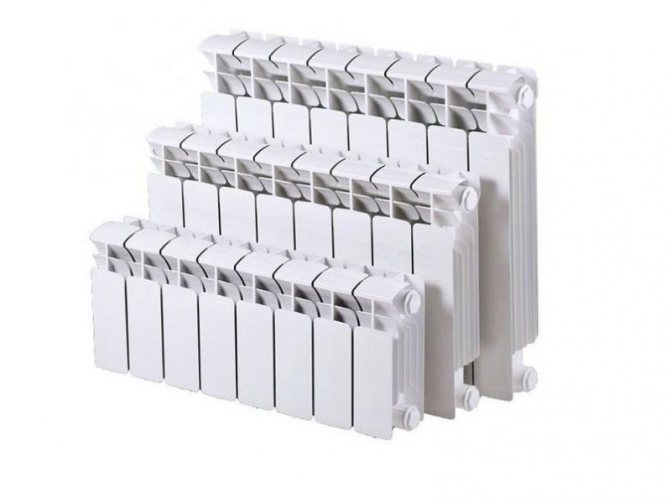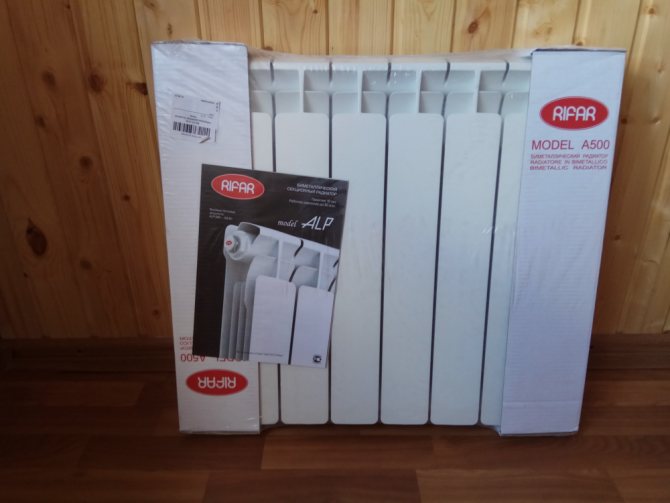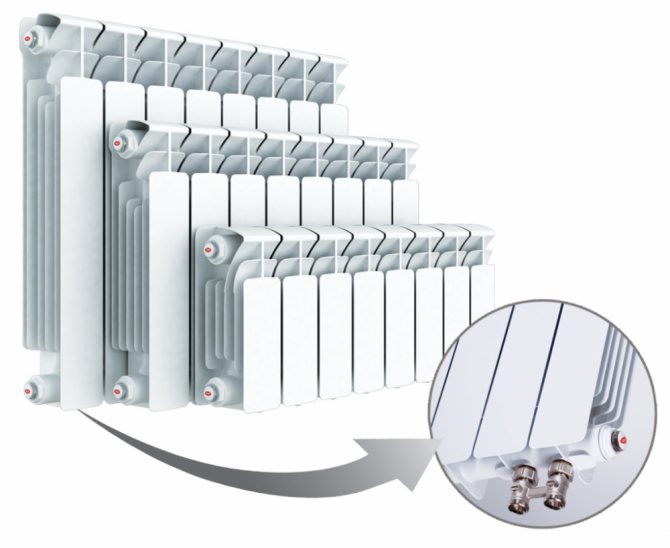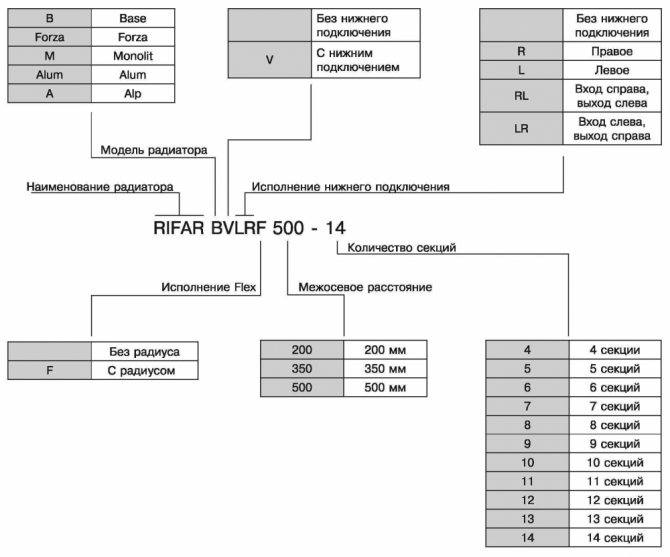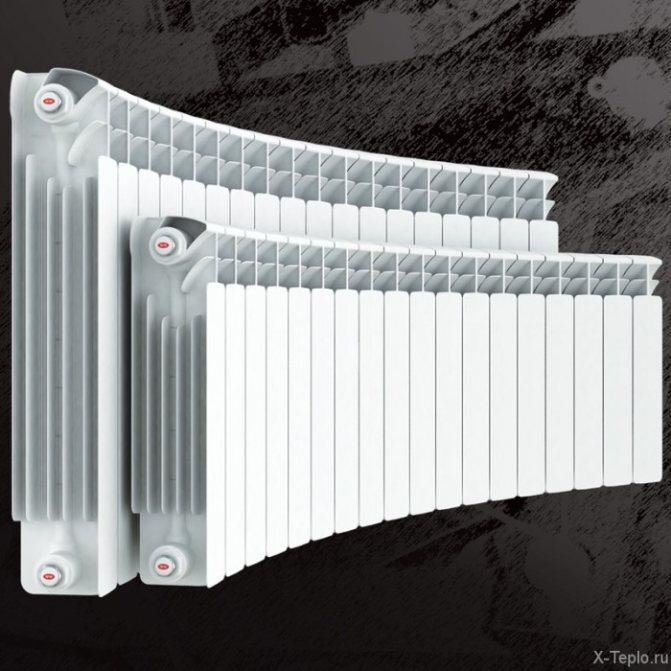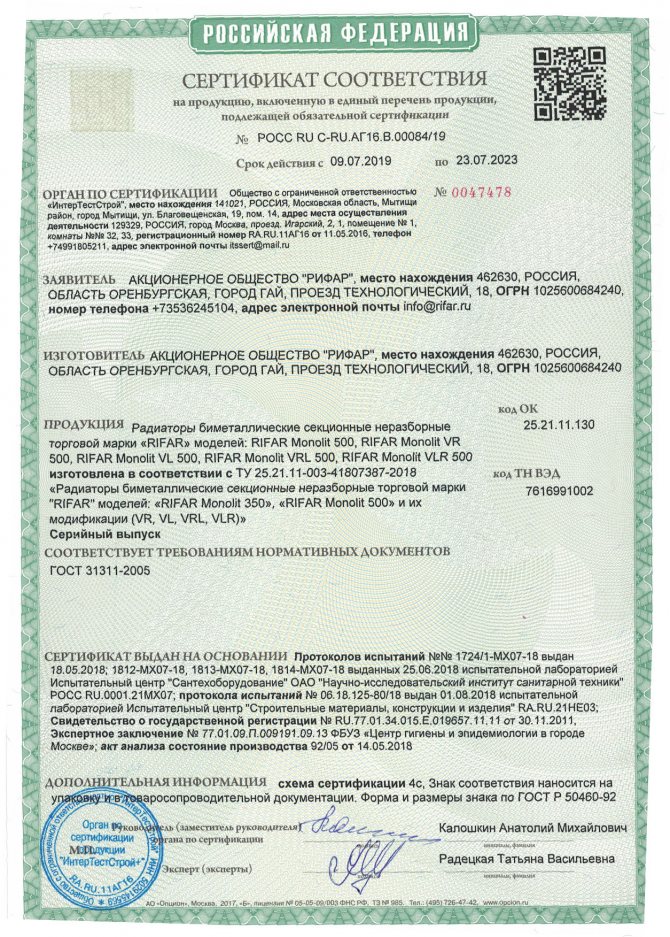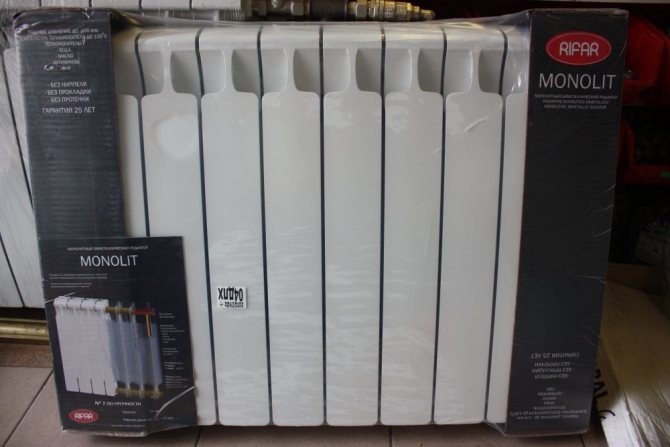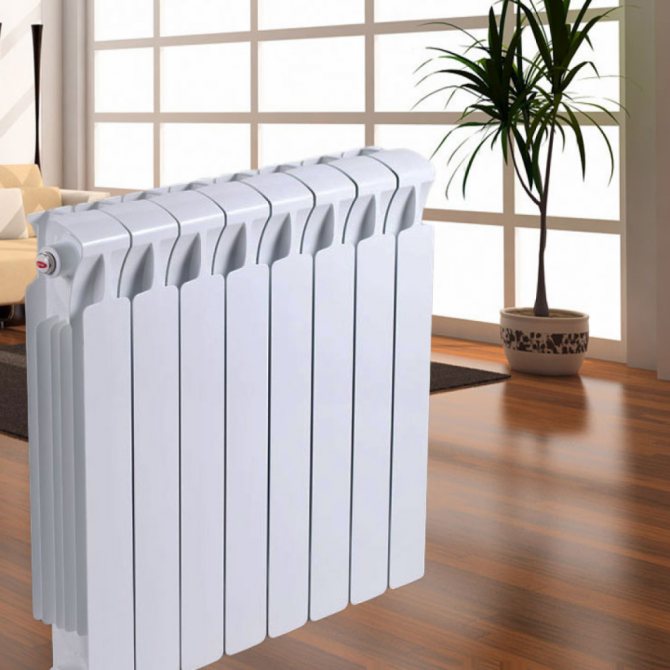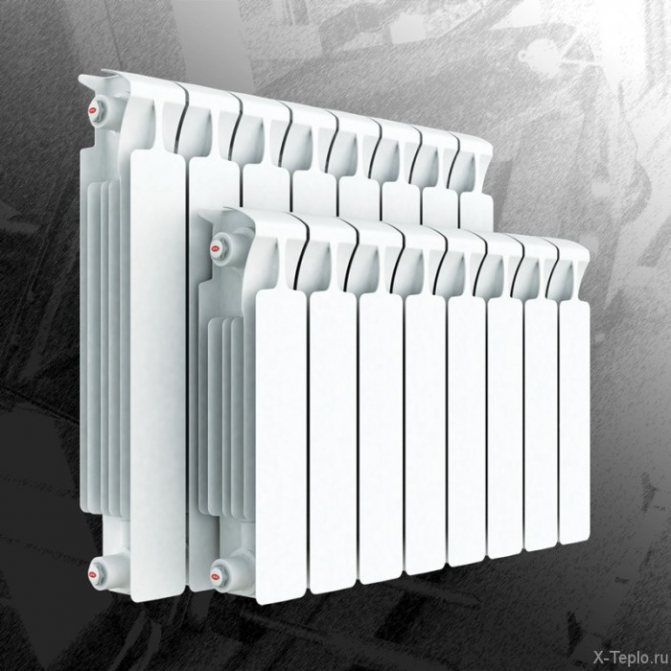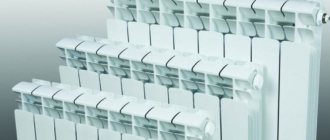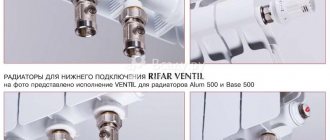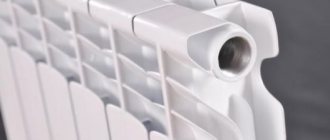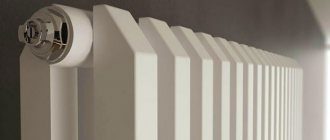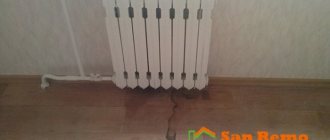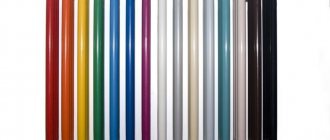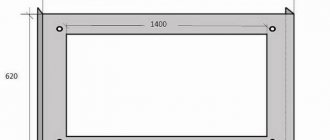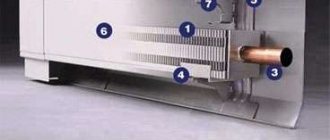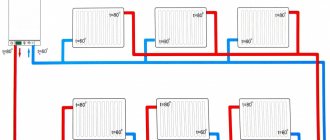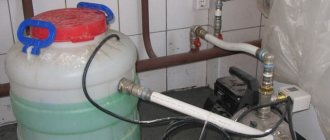On the market of modern heating devices, bimetallic structures are considered the best. By combining the advantages of steel and aluminum, the reliability and excellent technical characteristics of the radiators are achieved.

Before buying a bimetallic radiator, it is important to know how to choose the right one. The speed and complexity of the installation of the heating system, the quality of heating the room will depend on this. The stores have a large selection of batteries from various manufacturers. In this article, we will consider radiators from the domestic manufacturer Rifar. The latest technological developments, non-standard engineering solutions, the use of high-quality materials and excellent design are loved by buyers and specialists working with heating systems in all regions of the Russian Federation. In this article, we will consider the features of the equipment, advantages, technical characteristics.
Sectional radiators
Each section of the bimetallic radiator consists of an inner steel part in the form of vertically arranged tubes, and aluminum plates are fixed on top, which provide an attractive appearance and serve as a source of heat transfer. The section is monolithic, the connections of individual segments are carried out by the method of seamless welding using sealing materials. The inner part of the steel core is coated with a thin layer of silver, which increases the product's resistance to corrosion and prolongs its service life. The aluminum casing is positioned in such a way that it maximizes the transfer of heat to the external environment, while the design is ergonomic and attractive, so the radiators look good in any interior.
For the first time, the principle of energy conservation is implemented in Rifar sectional radiators, the batteries can be equipped with heat sensors and thermostats, which reduces utility costs and allows you to achieve comfortable temperature conditions in the room.
Rifar Base and Alp Radiators

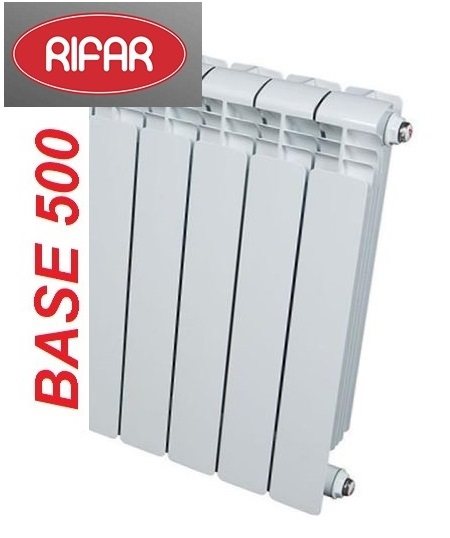
The Base series is the simplest and most convenient for installation in apartment buildings with a standard connection type. Each section has preset parameters for height, width and depth, on which the total heat output depends. The main advantage of the model is the ability to supplement the heating system with the required number of sections, taking into account climatic conditions, room size and layout features. Variations in the center distance from 200 to 500 mm and different section heights allow installing Base series radiators with any type of window openings. The weight of one section does not exceed 2 kg, so assembly and installation are quick and easy.
- The Alp series is an improved model of the basic series of Rifar sectional radiators. A distinctive feature is a shallow depth, which is important when installing a heating battery under narrow window sills without a niche. The inner structure of each section is similar to the previous line, but the outer part of the case differs in the arrangement of aluminum surfaces for maximum heat transfer at a shallow depth. The center distance is standard for the Alp line and is 500 mm. Due to the shallow depth, each section weighs less than 1.5 kg, which makes installation easier and expands the possibilities for choosing the type of radiator mounting.
Both series of Rifar sectional radiators operate with the same type of heat carrier, which is allowed to use technical water specified in accordance with GOST parameters. The manufacturer's warranty is 10 years, while compliance with the operating conditions increases the warranty period of the device's uninterrupted service to 25 years.
Rifar Base Radiator Specifications
| Model name | Center distance, cm | Height, cm | Depth cm | Width, cm | Weight of one section, kg | Heat transfer of one section, W |
| Rifar Base 500 | 50,0 | 57,0 | 10,0 | 7,9 | 1,92 | 204 |
| Rifar Base 350 | 35,0 | 41,5 | 9,0 | 7,9 | 1,36 | 136 |
| Rifar Base 200 | 20,0 | 26,1 | 10,0 | 7,9 | 1,02 | 104 |
Average price of radiators Rifar Base 500
| Radiator model name | External dimensions, cm | Power, W | Number of sections | The cost |
| Rifar Base 500/1 | 57,0/10,0/7,9 | Up to 204 | 1 section | from 450 rubles |
| Rifar Base 500/4 | 57,0/10,0/31,6 | Up to 816 | 4 sections | from 1820 rub. |
| Rifar Base 500/5 | 57,0/10,0/39,5 | Up to 1020 | 5 sections | from 2280 rub. |
| Rifar Base 500/6 | 57,0/10,0/47,4 | Before 1224 | 6 sections | from 2742 rub. |
| Rifar Base 500/7 | 57,0/10,0/55,3 | Before 1428 | 7 sections | from 3200 rub. |
| Rifar Base 500/8 | 57,0/10,0/63,2 | Before 1632 | 8 sections | from 3650 rub. |
| Rifar Base 500/9 | 57,0/10,0/71,1 | Before 1836 | 9 sections | from 4100 rub. |
| Rifar Base 500/10 | 57,0/10,0/79,0 | Until 2040 | 10 sections | from 4570 rub. |
| Rifar Base 500/11 | 57,0/10,0/86,9 | Before 2244 | 11 sections | from 5027 rub. |
| Rifar Base 500/12 | 57,0/10,0/94,8 | Up to 2448 | 12 sections | from 5484 rub. |
Specifications:
Country Russia Manufacturer Rifar Series and model Base Ventil 500/100 Category water heating system Type bimetallic radiator Sectional type Application area connection to the pipeline Pipe material steel Pipe thickness 1.25 mm Cover plate material aluminum Height 570 mm Depth 100 mm Center distance 500 mm Number sections 14 Section width 80 mm Radiator total length 1120 mm Bottom right connection Connection characteristics 2 nozzles G 3/4 ″ Weight 24 kg Weight of one section 1.92 kg Heat dissipation of one section 197 W Heat dissipation 90/70/20 оС 2856 W Heated area 28 , 5 sq. m Maximum operating pressure 20 bar Test pressure 30 bar Burst pressure 100 bar Maximum temperature of the heating medium 110 ° C Coolant liquid water Water volume 1.2 l Maximum permissible concentration of dissolved oxygen in the heating medium no more than 20 μg / cubic dm Color white Wall mounting Thermostatic valve no Air vent no Plugs no 10 years warranty Service life 25 years
Rifar Monolith and SUPReMO
Rifar bimetallic radiators of a new generation with a monolithic structure have become a real breakthrough in the field of creating reliable domestic-made heating radiators.
The steel core was first created using the technology of contact-butt welding, which was patented by the company's engineers and has no analogues in the world. The one-piece steel body completely eliminates the possibility of leakage and is able to withstand hydraulic shocks in heating networks over 100 atmospheres. The thickness of the walls of the pipes for the passage of the coolant coincides with the thickness of the pipes in Russian systems, this thick layer from the inside is coated with an anti-corrosion compound and makes it possible to fill the system with any type of liquid.
The aluminum housing, which hides the internal structure, looks attractive, has no sharp corners, and thanks to its wide ribs, it provides excellent heat dissipation and rapid warming up of the room. Factory painting in several layers using a special heat-resistant material adheres perfectly and does not require additional costs to maintain an attractive appearance.
To save and maintain a comfortable temperature, monolithic structures are equipped with thermostats and control sensors.
Due to the monolithic structure, this type of Rifar radiators does not provide for additional sections or modifications, but is produced with a large number of variations from 4 to 14 fins.
Depending on your preferences, you can choose one of two series of the monolithic ruler.

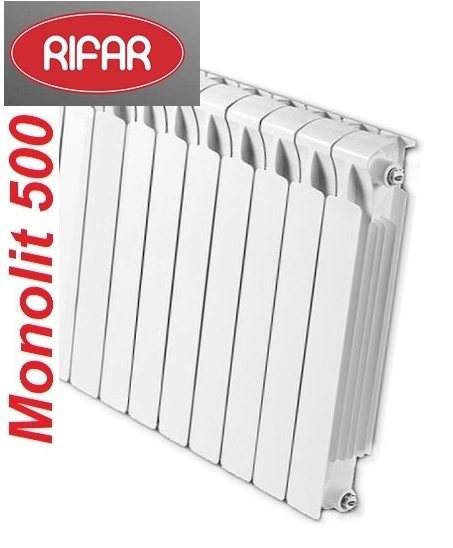
The MONOLIT series is similar to bimetallic designs of sectional radiators, but this similarity is only superficial. A durable one-piece steel case is hidden inside, the tubes of the coolant circulation system are located vertically, and the small angle of inclination of the aluminum fins ensures high heat transfer parameters. The complete absence of sharp corners and a heat-resistant coating makes it easier to care for the radiator, and the choice of the lower or upper connection type expands the operating conditions in various networks. Radiators manufactured later than 2011 can work with antifreeze, as indicated in the instructions for the device. Rifar guarantees the preservation of the technical characteristics of the monolithic structure of this series for 25-50 years, depending on the model.- The SUPReMO series is a dream come true for sophisticated design, safety and excellent thermal performance.The SUPReMO aluminum casing is a one-piece box that makes the radiator look attractive and eliminates the possibility of accidental injury. Beveled side surfaces increase heat transfer and allow you to quickly warm up a large room. The inner surface of the steel body is covered with an additional protective layer, which increases resistance to alkaline environments, makes it possible to use heat transfer oils and non-freezing liquids. SUPReMO radiators are adapted to the upper and lower connection type, suitable for left-side and right-side heating systems.
All designs are supplied complete with consumables adapted to the specified diameter of the heating pipes. Monolithic radiators are considered the best of all heating devices on the market today, and the reliability of the Rifar company has been proven by many years of successful work experience and reviews of satisfied customers.
Video review: metal radiators Rifar
Design features of various models of bimetal radiators
It is quite difficult for a simple layman to distinguish in appearance the innovative Syrah bimetallic radiators from ordinary aluminum batteries, the only nuance that will allow you to correctly navigate in a construction equipment store is the weight of the devices. So, a bimetallic radiator is one and a half times heavier than an aluminum analogue. This difference in weight is due to design features.
Universal technical characteristics allow real estate owners to buy a bimetallic radiator for heating private houses, offices, city apartments and apartments in high-rise buildings. They are superior to analogs made of cast iron, aluminum, steel, because in the development process, manufacturers have tried to combine all the available technological advances in bimetallic structures. In the end, the batteries turned out to be aesthetic, lightweight and compact, they are distinguished from a number of analogues by a simple installation process, while the prices for bimetallic radiators are in an acceptable price range for most consumers.
The name of the batteries indicates that manufacturers use two types of metals to make devices. In particular, Italy supplies modern bimetallic radiators to the market in the form of heating devices made using steel and aluminum. Steel is used as the material for the core and the outer casing of the batteries is coated with aluminum.
Thus, inside the steel structure of the battery, a coolant circulates under a certain pressure, while the attractive aluminum case does not spoil the interior with its appearance and allows you to quickly transfer the temperature to the room. The excellent physical properties of aluminum allow the battery case to warm up as quickly as possible. In this case, the basis of the design of the radiator is a steel core, which protects the aluminum shell from the action of alkali, acids and other aggressive impurities present in the coolant.
When choosing which bimetallic heating radiators are better, it is worth focusing on the fact that the steel core allows the heating device to be used even in systems with high internal pressure. Therefore, such batteries can be used in modern multi-storey buildings, where, with the help of a circulation pump, pressure is deliberately injected to supply hot coolant to the outer floors.
Another design feature that is worth paying attention to when studying the prices of bimetallic heating radiators is the diameter of the internal channels in the steel core. The smaller the channel diameter in bimetallic heating devices, the smaller the volume of the circulating coolant must be present in the heating system.
Thus, by choosing the best option for batteries, the homeowner can reduce the volume of the circulating coolant by two or three times. This will not only save water in the process of filling and replenishing the heating system, but will provide an opportunity for instant heating of radiators, which among their analogues are distinguished by the greatest sensitivity to changing the thermostat settings.
The difference between radiators Rifar Base and Monolith
The most important difference between both radiator lines is in their design features. Rifar Base is a collapsible structure, consisting of a different number of sections, the number of which depends on the calculated heating power. A monolith is a one-piece product with a predetermined heat capacity. The first withstands the pressure of hot water or antifreeze up to 30 atmospheres, the second - up to 150.
Thus, Rifar Base radiators can be used in apartments or offices, Monolith - in premises of any purpose and thermal insulation. They are reliable, durable, easy to install, have a modern design and fully satisfy all the needs of consumers.
- Sectional models make it possible to complete the radiator with the required number of sections.
- For non-standard layouts, there are sectional models with a radius of curvature.
- If it is necessary to make the connection in a non-standard way, it is possible to choose models with a lower and upper type of coolant supply.
- All consumables supplied by Rifar are adapted for Russian engineering structures.
- Monolithic samples are ideal for installation in apartment buildings with frequent pressure drops in the heating system.
- Modern monolithic structures Rifar are suitable for all types of heat carriers.
- The reliability of the design and ease of installation have earned recognition among installers, and the long service life allows you to forget about replacing the heating system for a long time.
The manufacturer appreciates quality and works with reliable suppliers of its products, who can give a detailed description of each model and advise on any issues related to heat supply in an apartment.

